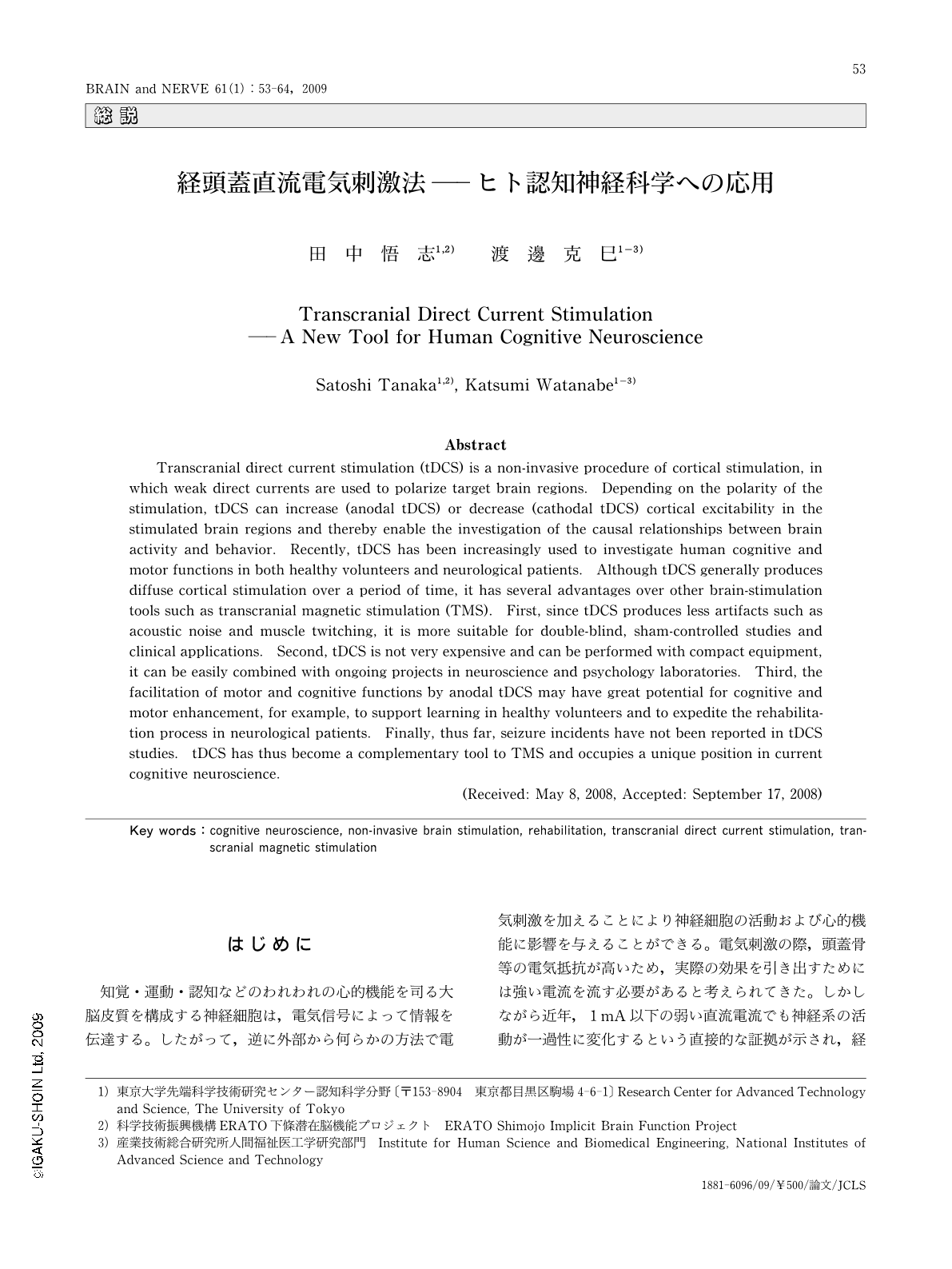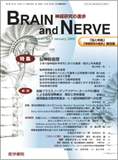Japanese
English
- 有料閲覧
- Abstract 文献概要
- 1ページ目 Look Inside
- 参考文献 Reference
はじめに
知覚・運動・認知などのわれわれの心的機能を司る大脳皮質を構成する神経細胞は,電気信号によって情報を伝達する。したがって,逆に外部から何らかの方法で電気刺激を加えることにより神経細胞の活動および心的機能に影響を与えることができる。電気刺激の際,頭蓋骨等の電気抵抗が高いため,実際の効果を引き出すためには強い電流を流す必要があると考えられてきた。しかしながら近年,1mA以下の弱い直流電流でも神経系の活動が一過性に変化するという直接的な証拠が示され,経頭蓋直流電気刺激(transcranial direct current stimulation: tDCS)はヒトの脳活動を非侵襲的に修飾することのできる装置として,認知神経科学分野で脚光を浴びている1,2)。すでに英文ではtDCSを扱った総説がいくつか存在するが3-7),tDCSを用いた認知神経科学の最新の知見を幅広く体系的に扱ったものはない。また和文では実験論文も含めtDCSを扱ったものは極めて限られている8,9)。したがって,本論文ではtDCSの基本的原理やtranscranial magnetic stimulation(TMS)との違い,また安全性の面について可能な限り詳細に解説を行った。そして健常者および神経疾患患者を対象としたtDCS研究の最新の知見をまとめ,認知神経科学におけるtDCSの現在の位置づけおよび今後の展開について考察を行った。
Abstract
Transcranial direct current stimulation (tDCS) is a non-invasive procedure of cortical stimulation, in which weak direct currents are used to polarize target brain regions. Depending on the polarity of the stimulation, tDCS can increase (anodal tDCS) or decrease (cathodal tDCS) cortical excitability in the stimulated brain regions and thereby enable the investigation of the causal relationships between brain activity and behavior. Recently, tDCS has been increasingly used to investigate human cognitive and motor functions in both healthy volunteers and neurological patients. Although tDCS generally produces diffuse cortical stimulation over a period of time, it has several advantages over other brain-stimulation tools such as transcranial magnetic stimulation (TMS). First, since tDCS produces less artifacts such as acoustic noise and muscle twitching, it is more suitable for double-blind, sham-controlled studies and clinical applications. Second, tDCS is not very expensive and can be performed with compact equipment, it can be easily combined with ongoing projects in neuroscience and psychology laboratories. Third, the facilitation of motor and cognitive functions by anodal tDCS may have great potential for cognitive and motor enhancement, for example, to support learning in healthy volunteers and to expedite the rehabilitation process in neurological patients. Finally, thus far, seizure incidents have not been reported in tDCS studies. tDCS has thus become a complementary tool to TMS and occupies a unique position in current cognitive neuroscience. (Received: May 8,2008,Accepted: September 17,2008)

Copyright © 2009, Igaku-Shoin Ltd. All rights reserved.


